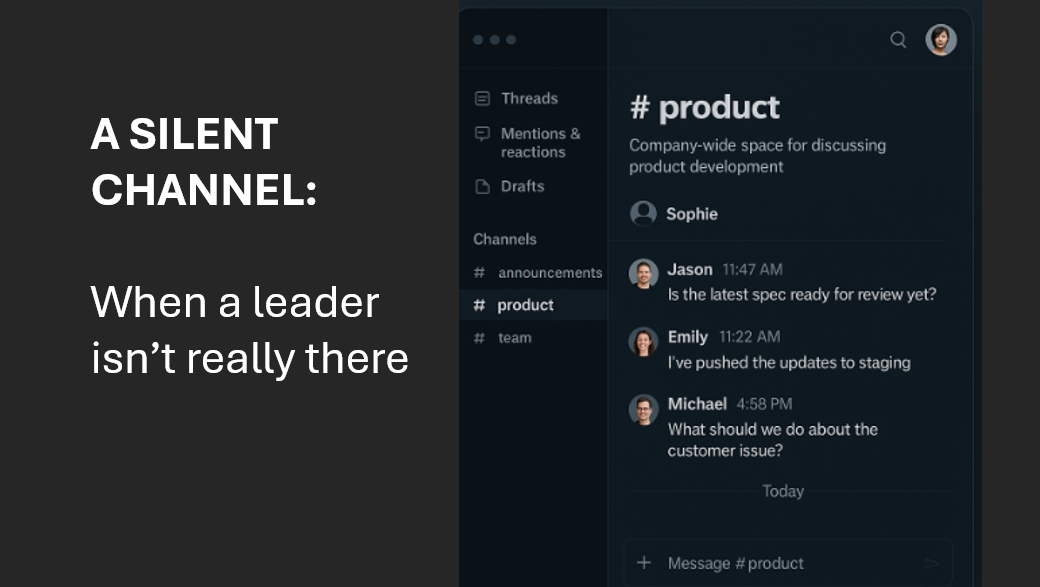Introduction
As coaches and consultants, we work across a variety of organisations, and one issue we frequently encounter when addressing underperformance or inaction is a failure in communication.
This is not necessarily a failure to communicate – this distinction is crucial. It’s not that leaders aren’t talking to their teams; it’s that the message is getting lost in translation.
Leaders of character understand the importance of clearing the fog, helping their teams see how their work is relevant not only to the organisation but also to their own personal goals.
When people see the purpose behind their work, they approach it with renewed vigour and commitment.
The Communication Gap: A Common Leadership Challenge
In many organisations, the link between communication and action can become obscured.
Leaders may convey information but, if it isn’t aligned with the audience’s needs and perspectives, it may fail to inspire action.
The most common justification for underperformance isn’t a lack of information but rather a lack of clarity and relevance in that information. Employees are left wondering, “What’s in it for me?” and, when they can’t find a satisfactory answer, their engagement and productivity suffer.
The Role of Leaders: Clearing the Fog
Effective leaders recognise that their role is not merely to disseminate information but to illuminate the path forward. They make the connection between what needs to be done and why it matters, both for the organisation and the individual.
This clarity transforms routine tasks into meaningful contributions, giving work a sense of purpose.
When employees understand how their efforts align with organisational goals—and how these efforts will help them achieve their own ambitions—they are far more likely to bring energy and commitment to their roles.
Connecting with Your Audience: A Strategic Approach
Great communicators start with their audience in mind. They ask themselves: What are the concerns of my team? How can my message address these concerns and resonate with them?
Leaders who successfully connect with their teams do so by designing their communication to meet the audience where they are. This means understanding what matters to them, addressing their worries, and aligning the message with their values and motivations.
Research suggests that effective communication occurs when the audience:
- Clearly understands the message.
- Recognises the importance of what’s being communicated.
- Feels compelled to act on the issue.
- Knows exactly what they need to do next.
If any of these elements are missing, the communication likely won’t result in the desired action.
Tailoring Your Message: The Key to Engagement
To clear the fog, leaders need to tailor their messages. This involves more than just choosing the right words; it means connecting the dots between the organisation’s goals and the personal aspirations of the team members.
Consider the following when preparing your next communication:
- Who is your audience? Understand their roles, motivations, and concerns.
- Why should they care? Make the relevance of your message clear.
- What’s in it for them? Connect your message to their personal goals.
- How can you deliver your message effectively? Consider the tone, energy, and style that will resonate most.
During the communication, pay attention to the audience’s responses. Are they engaged, or is their body language suggesting otherwise?
Be prepared to adapt your approach on the fly, reinforcing points that resonate and adjusting areas where the message isn’t landing.
The Impact of Purposeful Communication
When leaders succeed in clearing the fog, they do more than just improve communication—they transform the work environment.
Employees who understand the relevance of their tasks are more likely to approach their work with enthusiasm and commitment. This sense of purpose not only enhances individual performance but also contributes to the overall success of the organisation.
Conclusion
In conclusion, the difference between simply communicating and truly connecting lies in the ability to clear the fog and show people why their work matters. Leaders who master this art inspire their teams to perform at their best, turning communication into action and purpose into performance.
Call to Action
Reflect on your own communication strategies. Are you just sharing information, or are you making the connection clear for your team? How can you tailor your messages to better align with their needs and goals?
This article was drawn from information in our book Leader iD
Exigence provides a full suite of evidence-based business coaching solutions, driven by a desire to help individuals and teams to achieve their performance potential. Find out more here or book a call to talk through how we can support you.





